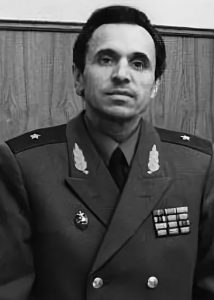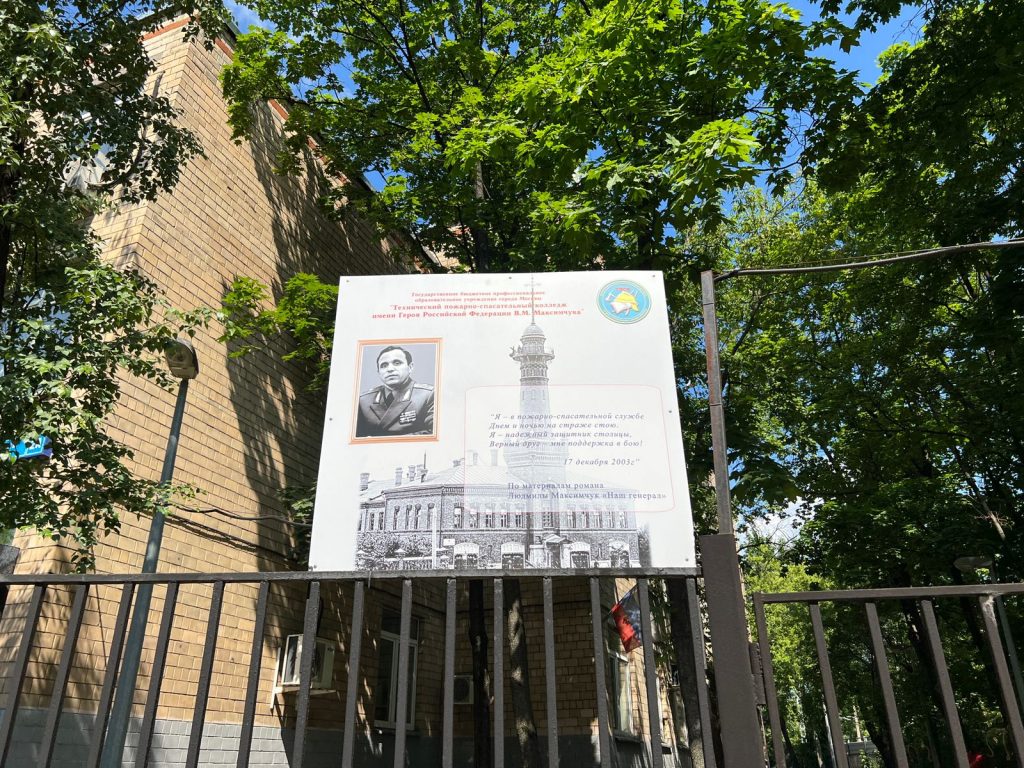Vladimir Mikhailovich
Maximchuk
1947-1994

Vladimir Mikhailovich Maksimchuk was the Head of the Operational and Tactical Department of the Main Fire Department of the Ministry of Internal Affairs of the USSR, a Major General of the Internal Service. He was born on June 8, 1947 in the village of Dobryvody, the Zbarazhsky district, the Ternopil region, the Ukrainian SSR. In 1965, he finished high school in the Lyubarsky district of the Zhytomyr region. He was in the internal affairs bodies of the Ministry of Internal Affairs of the USSR since October 1965. In 1968 he graduated with honors from the Lvov Fire Technical School of the Ministry of Internal Affairs of the USSR. Since May 1968, he served in the Moscow City Fire Department as the head of the guard of the paramilitary fire department, since October 1968 – the Deputy head of the paramilitary fire department No. 2, since October 1969 – the head of the paramilitary fire department No. 50. In 1974, he graduated in absentia from the Higher Engineering Fire-Technical School of the Ministry of Internal Affairs of the USSR in Moscow. He continued to serve in the Moscow City Fire Department, from March 1975 he was the Deputy chief of the 1st detachment, from September 1976 – the Deputy chief of the 12th detachment, from February 1978 – the Deputy commander – chief of staff of the training regiment of the paramilitary fire department of the Moscow City Executive Committee, from August 1978 – the head of the combat training department headquarters of the Fire Department of the Moscow City Police Department. In December 1980, he was transferred to the Main Department of Fire Protection (MDFP) of the Ministry of Internal Affairs of the USSR, was appointed as the deputy head of the operational and tactical Department, and in March 1985 he became the head of this department. For many years of service in the metropolitan region, which by definition is the most difficult in terms of fire due to the significant population density and large concentration of complex engineering structures and industrial production, including dangerous and especially dangerous, Vladimir Maksimchuk became a real ace of firefighting. It is not by chance that he quickly grew in positions, first began to teach others, and then to direct the actions of fire departments. On the personal account of Vladimir Maksimchuk, the elimination of the most complex fires and blazes. He was able to extinguish such various objects as high-rise residential buildings and factory workshops, large administrative buildings and oil depots, power plants and underground subway structures, forests and peat bogs, oil and gas pipelines. The number of human lives saved in these operations goes into the thousands. When the thunder of the Chernobyl nuclear power plant disaster struck on April 26, 1986, Lieutenant Colonel Maksimchuk was the head of the operational and tactical department of the MDFP of the Ministry of Internal Affairs of the USSR. He switched to the barracks mode of operation, analyzed the information received and prepared proposals. Since May 9, 1986, he personally was on a business trip to the Chernobyl accident elimination zone, being the head of all fire protection forces involved in the disaster elimination. I went to the station every day. Since March 1989, he was the Deputy Chief, and since January 1991, the First Deputy Chief of the MDFP of the Ministry of Internal Affairs of the USSR. In this position, he headed the operation to eliminate a fire at a mineral fertilizer plant in the city of Ionava, the Lithuanian SSR, where a tank with 7,000 tons of ammonia exploded on March 20, 1989. The explosion destroyed an overpass with pipelines and protective structures, liquid ammonia from the connection with gas and oxygen broke out, the flame covered an area within a radius of 200 meters. Warehouses of mineral fertilizers turned out to be in this zone and caught fire, from burning of which toxic substances began to be released in large quantities. 7 people died. The immediate danger threatened the city with a population of 50,000 inhabitants. Arriving at the crash site, Maksimchuk ordered to attract the fire protection forces of Belarus and the nearest regions of the RSFSR, to deliver 7 powerful pumping stations to the place of fire elimination. During the day on March 21, a massive supply of a huge amount of water managed to pour burning fertilizers and stop the chemical reaction. People worked in the poison cloud in protective kits and gas masks. By the evening of March 22, the fire was completely extinguished. As in Chernobyl, Maksimchuk organized the work of subordinates in shifts, while he himself was in the area of work of combat crews constantly. This disaster was called by experts “chemical Chernobyl”. The actions of firefighters to eliminate it are studied in educational institutions as an example of the most effective and prompt actions in the elimination of fires in chemical industries. Of the firefighters who worked, 1 fighter was killed, 216 people were burned and poisoned, including Colonel Maksimchuk himself. He was a Colonel of the Internal Service (06/18/1986). From June 1992 until his death, he was the head of the Fire Department of the Moscow City Police Department. Despite the most severe painful illness (thyroid cancer and stomach cancer), which had been progressing since 1989 due to radiation exposure in Chernobyl, after undergoing dozens of complex operations, he continued to work actively. Having made the right conclusions about the shortcomings and the organization of emergency response, he made great efforts to eliminate them. An emergency response rescue service was created, a modern training centre for training fire specialists was created, the latest models of fire equipment for working in emergency conditions and at high altitudes were developed, aerial fire forces were created, several dozen new fire depots were built in Moscow. The last feat of the brave firefighter was the rapid extinguishing of the buildings of the “White House” and the Moscow City Hall after the tragic events in October 1993. After a serious illness, Major General of the Internal Service Vladimir Maksimchuk died on May 22, 1994 in one of the Moscow hospitals. He was buried at the Mitinsky Cemetery in Moscow, at the memorial to the victims of Chernobyl (plot 162). For courage and heroism in the performance of a special task, by the Decree of the President of the Russian Federation dated December 18, 2003, Major General of the Internal Service Vladimir Mikhailovich Maksimchuk was awarded the title of the Hero of the Russian Federation (posthumously).
Address: Moscow, Svetly ave., 2A

